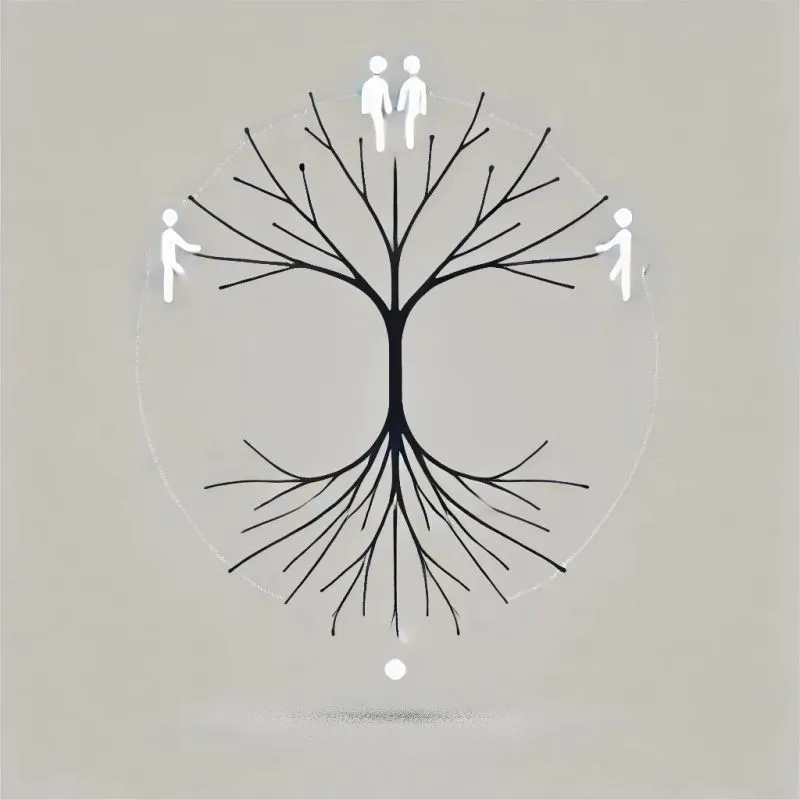Research shows that negative memories are processed 5 times more intensely than positive ones, creating lasting imprints that can resurface years later. Your brain's survival system prioritizes painful experiences to protect you from future threats. Learn why this happens, how it affects your daily life, and gentle, evidence-based approaches to healing without erasing your past.
When Painful Moments Echo Louder Than Peaceful Ones
There are moments you wish you could forget—not because they weren't important, but because they still hurt. A harsh comment, a public mistake, a time you felt unsafe, unseen, or unworthy. Even after time passes, these memories often resurface without warning in the middle of a calm day, during conversation, or just before sleep. When they do, your body reacts as if it's all happening again. This isn't overthinking or weakness—it's your brain's survival system working exactly as designed. Research from UCLA shows that negative emotional memories are processed with five times more neural intensity than positive ones, creating deeper, more persistent imprints that can influence your thoughts and behaviors for years.
How Your Brain Prioritizes Painful Experiences
The Amygdala's Memory Marking System
Your amygdala—the brain's alarm system—doesn't just record threatening events; it marks them as high priority for future reference. When something feels dangerous, scary, or deeply hurtful, the amygdala floods the experience with stress hormones like adrenaline and cortisol. These chemicals act like highlighting ink, ensuring the memory gets burned into long-term storage with exceptional clarity. Harvard neuroscience research shows that emotionally charged memories are consolidated 200% more effectively than neutral ones.
Multi-Sensory Encoding of Threat
Unlike happy memories, which often fade into general impressions, painful memories get encoded with extraordinary detail. Your brain records not just what happened, but the emotions, physical sensations, sounds, smells, and environmental context. This comprehensive encoding means that seemingly unrelated triggers—a particular tone of voice, a smell, or even a time of day—can instantly transport you back to that painful moment with startling vividness.
The Evolutionary Logic Behind Pain Priority
From an evolutionary perspective, remembering dangers more vividly than pleasures was crucial for survival. Our ancestors who could quickly recall and avoid previously threatening situations were more likely to survive and reproduce. While this system protected humans for millennia, it can become problematic in modern life where psychological threats are often mistaken for physical ones, keeping us in a state of hypervigilance long after danger has passed.
Why Positive Memories Feel Less Vivid
Positive experiences activate different neural pathways than negative ones, leading to what psychologists call the 'negativity bias.' Research from the University of Washington shows that while positive emotions certainly create memories, they don't trigger the same intense neurochemical marking system that painful experiences do. Happy memories tend to be processed more gently, integrated more slowly, and stored with less emotional intensity. This doesn't mean positive experiences are less meaningful—just that your brain doesn't treat them as urgent survival information requiring immediate, detailed storage. The result is that one deeply painful experience can psychologically outweigh dozens of positive ones, even when the positive experiences were objectively more significant.
How Painful Memories Shape Present-Day Life
Hypervigilance in Safe Situations
When painful memories remain active, your nervous system stays partially activated even in safe environments. You might find yourself scanning for threats that aren't there, feeling anxious in situations that objectively pose no danger, or having difficulty relaxing even when life is going well. This isn't paranoia—it's your brain's attempt to protect you based on past experiences that felt threatening.
Impact on Relationships and Trust
Painful memories often involve relationships—betrayal, rejection, criticism, or abandonment. These experiences can create unconscious patterns that affect how you show up in current relationships. You might find yourself expecting rejection, being overly sensitive to criticism, or having difficulty being vulnerable with people who genuinely care about you.
Understanding attachment patterns can help explain how early painful experiences continue to influence relationship behavior.
Self-Perception and Inner Dialogue
Painful memories don't just affect how you see the world—they influence how you see yourself. Critical voices from the past can become internalized, creating ongoing self-doubt, shame, or feelings of unworthiness. These internal narratives often feel true because they're connected to emotionally vivid memories, even when current evidence contradicts them.
The Gentle Path: Healing Without Erasing
Creating New Neural Pathways
Healing doesn't require forgetting or erasing painful memories—it involves creating new neural pathways that can coexist with old ones. When you repeatedly experience safety, kindness, and genuine connection, your brain begins to develop alternative response patterns. Over time, these new pathways can become stronger and more automatic than the old fear-based ones, allowing you to respond to current situations based on present reality rather than past pain.
Nervous System Regulation
Trauma-informed therapy approaches focus on helping your nervous system learn that it's safe to relax. Techniques like mindfulness, breathing exercises, gentle movement, and somatic therapies help reset your baseline stress level. Research shows that practices which activate the parasympathetic nervous system—your body's 'rest and digest' mode—can gradually reduce the intensity of traumatic memory activation.
The Power of Corrective Experiences
Healing often happens through 'corrective emotional experiences'—situations where you encounter the opposite of what hurt you in the past. If you experienced rejection, healing might come through consistent acceptance. If you felt unheard, recovery might involve
experiences of being truly listened to and understood. These corrective experiences don't erase painful memories, but they provide your brain with evidence that different outcomes are possible.
Practical Approaches to Memory Healing
Mindful Memory Processing
Rather than trying to suppress painful memories, mindfulness approaches teach you to observe them with compassion. When difficult memories arise, you can acknowledge them without becoming overwhelmed: 'I notice that painful memory coming up. It makes sense that my brain stored this to protect me. I'm safe now, and this memory is from the past.' This approach reduces the emotional charge of memories over time.
Gradual Exposure in Safe Environments
Working with a trauma-informed therapist, you can gradually process painful memories in a controlled, safe environment. Techniques like EMDR (Eye Movement Desensitization and Reprocessing) help the brain reprocess traumatic memories so they become integrated rather than intrusive. This doesn't erase the memories but changes how your nervous system responds to them.
Building Present-Moment Awareness
Grounding techniques help you distinguish between past memories and present reality. When painful memories surface, focusing on immediate sensory experiences—what you can see, hear, touch, or smell right now—helps anchor you in the present moment where you are actually safe. This practice gradually trains your brain to recognize the difference between memory and current reality.
Honoring Your Healing Timeline
Healing from painful memories isn't linear, and it doesn't happen on anyone else's timeline. Your brain developed these protective mechanisms for good reasons, and they deserve respect even as you work to update them. Some memories may lose their intensity relatively quickly, while others may take years to fully integrate. Both timelines are normal and valid. The goal isn't to reach a point where painful experiences never affect you—it's to develop the resilience and skills to navigate difficult memories when they arise without being controlled by them. You don't need to rush your healing, pretend the past didn't happen, or achieve some perfect state of being 'over it.' You're allowed to take your time, seek support when you need it, and gradually build a life where fear no longer runs the show.





